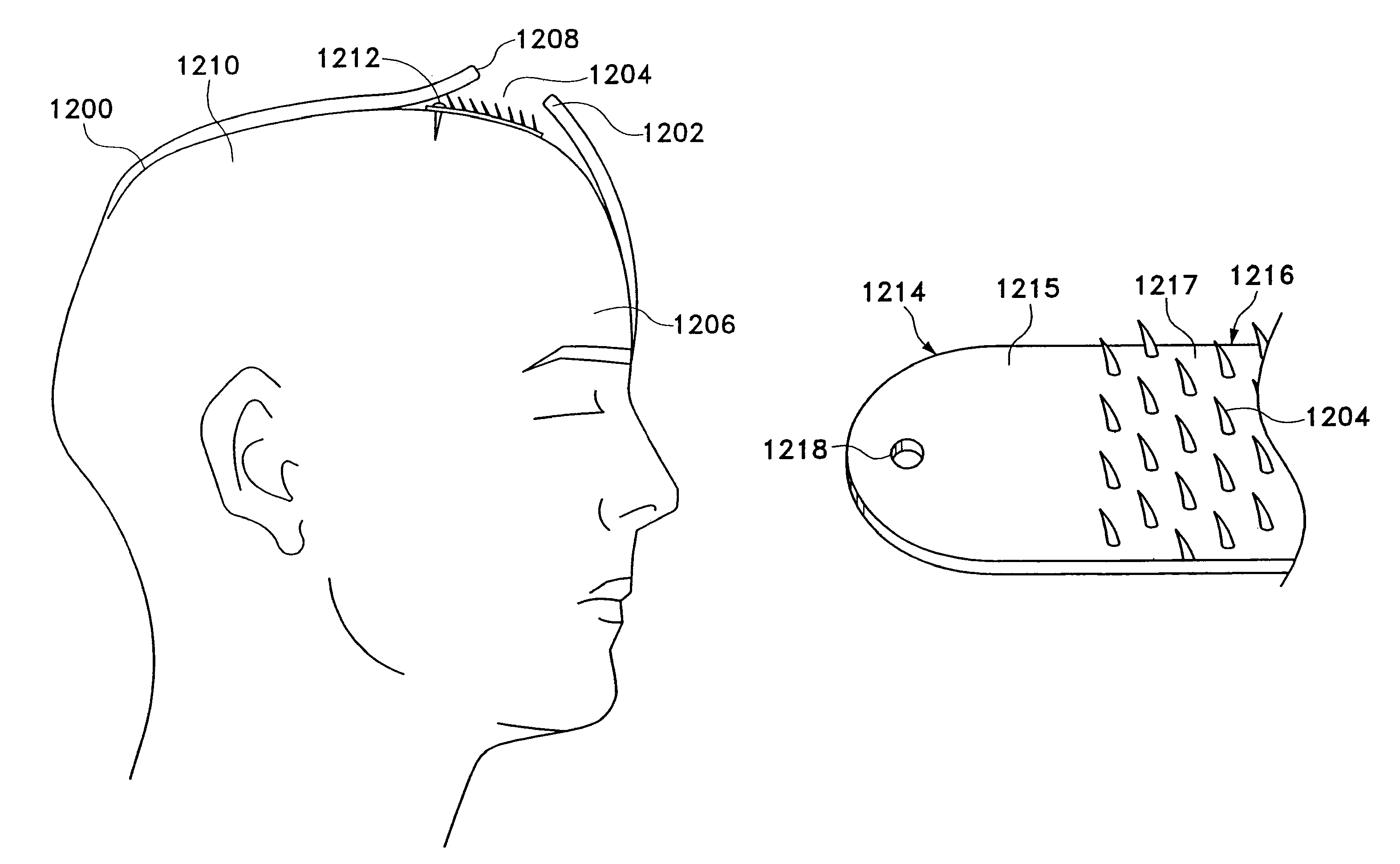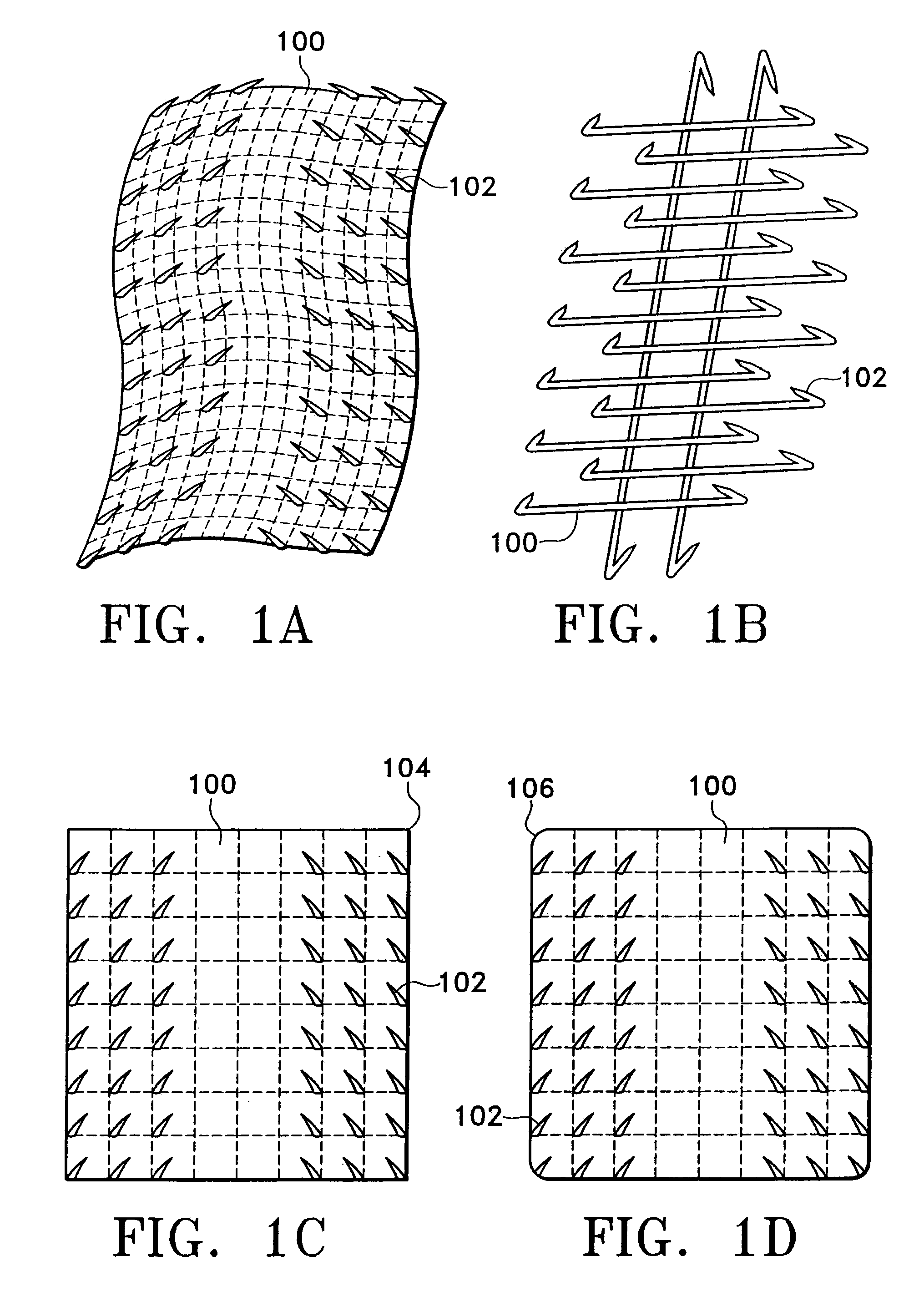Multi-point tissue tension distribution device and method, a chin lift variation
a tissue tension distribution and multi-point technology, applied in the field of surgery, can solve the problems of increasing the risk of wound infection and wound dehiscence, the sophistication of manual suture placement in wounds has advanced relatively little, and the process is successful, so as to achieve the least resistance to piercing the scalp or tissue, the effect of biodegradability and absorbibility by the patien
- Summary
- Abstract
- Description
- Claims
- Application Information
AI Technical Summary
Benefits of technology
Problems solved by technology
Method used
Image
Examples
Embodiment Construction
[0105]Our inventive device may be used when working with bone anchors or a variety of soft tissues. The device is of the general configurations shown in FIGS. 1A-1B and comprises a plurality of attachment points (102) emanating from and preferably affixed to a supportive backing (100) that is a generally a porous material that may have the structure of a mesh, net, or lattice. The degree of flexibility of the backing is determined by the material of construction, the shape and dimensions of the device, the type and properties of the approximated tissue, and the area of the body into which the device is placed. For example, a tightly curved or mobile part of the body, e.g., a joint, will require a more flexible backing, as would a tendon or nerve repair due to the amount of bending the device needs for the attachment. Also, depending on the type of material used, the thickness of the backing as well as its width and length may determine the flexibility of the device. Furthermore, the...
PUM
 Login to View More
Login to View More Abstract
Description
Claims
Application Information
 Login to View More
Login to View More - R&D
- Intellectual Property
- Life Sciences
- Materials
- Tech Scout
- Unparalleled Data Quality
- Higher Quality Content
- 60% Fewer Hallucinations
Browse by: Latest US Patents, China's latest patents, Technical Efficacy Thesaurus, Application Domain, Technology Topic, Popular Technical Reports.
© 2025 PatSnap. All rights reserved.Legal|Privacy policy|Modern Slavery Act Transparency Statement|Sitemap|About US| Contact US: help@patsnap.com



